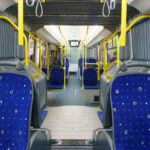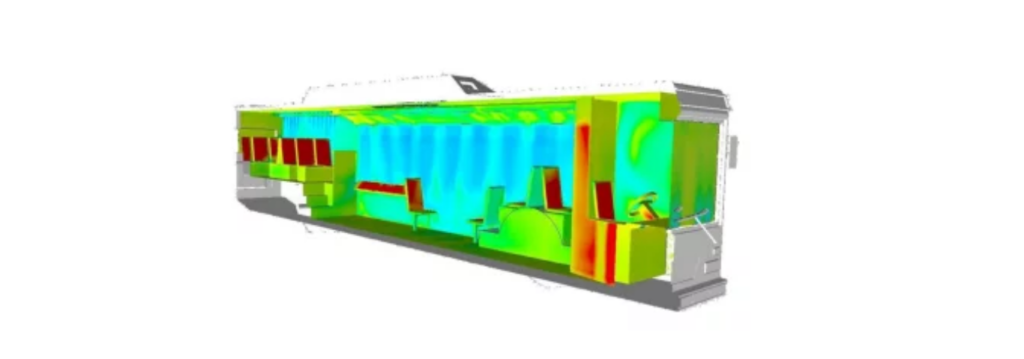
Confort thermique et gestion énergétique des véhicules
Mots clés : confort thermique, dimensionnement, climatisation, taux de renouvellement d’air, brassage, humidité, vitesse, puissance, débit, CFD, simulation numérique, calculs 3D, PMV, PPD, perte de charge, ponts thermiques.
ENJEUX ET OBJECTIFS
Le confort thermique représente un nouvel axe de développement majeur dans la conception des futurs vecteurs de mobilité. Avec des contraintes géographiques et conditions environnementales de plus en plus extrêmes (réchauffement climatique, pic de chaleur), des flux de transport en augmentation, les variables définissant le confort thermique prennent une plus grande place dans le dimensionnement des véhicules.
Les systèmes de climatisation se doivent d’être toujours plus puissants pour compenser ces phénomènes nouveaux.
A contrario, les normes environnementales sont de plus en plus restrictives quant aux consommations énergétiques. Le rapport consommation/confort doit être dimensionné au plus juste pour atteindre les critères de performances souhaités.
Le confort thermique relève d’une réelle complexité puisque la température d’un volume n’est pas le seul facteur permettant de caractériser le confort :
Ξ Courants d’air
Ξ Variations de température verticales
Ξ Température du sol et activité métabolique feront varier le ressenti de confort thermique.
Complémentairement, la question des particules fines, dégagement gazeux nocif pour l’homme et plus généralement, la question de l’environnement est abordée dans ces dimensionnements. L’étude du confort thermique en calcul CFD 3D permet de connaitre les zones dites « mortes » où l’accumulation de particules, gaz nocif, bactéries peut être visualisée puis optimisée.
Le développement de ces systèmes constitue un défi car il s’agit d’assurer le confort tout en limitant la consommation énergétique et les risques sanitaires. ⇓

PRESTATIONS CIMES
Ξ Prédimensionnement par approche système des caractéristiques de climatisation/chauffage (puissance, débit)
Ξ Création d’un outil de dimensionnement de climatisation/chauffage
Ξ Calcul des taux de renouvellement d’air et de brassage
Ξ Simulation numérique 3D à partir de conceptions paramétrées
Ξ Validation des températures, taux d’humidité, confort thermique
Ξ Qualification du confort thermique par les critères de Fanger (PMV, PPD) ou par une loi imposée
Ξ Optimisation du système (réduction perte de charge, distribution d’air, ponts thermiques)
Ξ Réduction de la consommation énergétique du système de climatisation et de chauffage







